Slobot About Town CXIX:
 |
 |
Civil War Slobot, pt. 02!
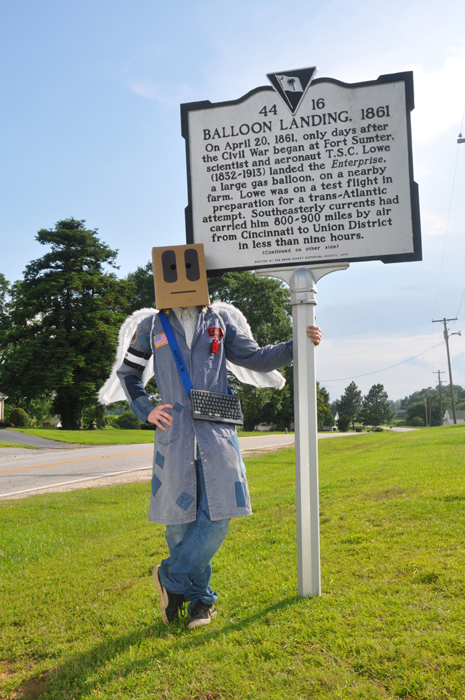
One of the lesser known tales of the American Civil War is that of the aerial antics of America's first Chief Aeronaut, Thaddeus Sobieski Constantine Lowe. |
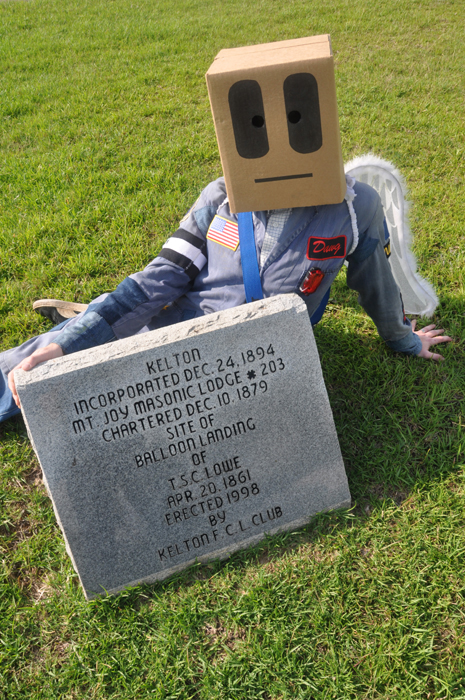
T. S. C. Lowe was born in New Hampshire in 1832. By 1857 Lowe was building and launching balloons.
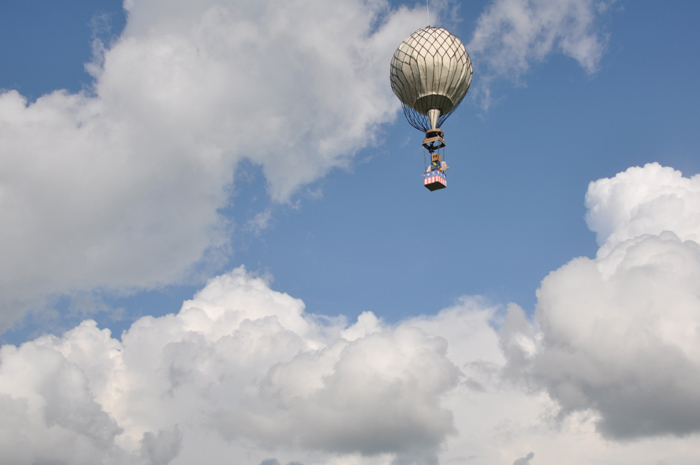
To test the feasibility of a transatlantic flight Lowe decided to pilot a balloon from Cincinnati, Ohio to Washington, D. C. |
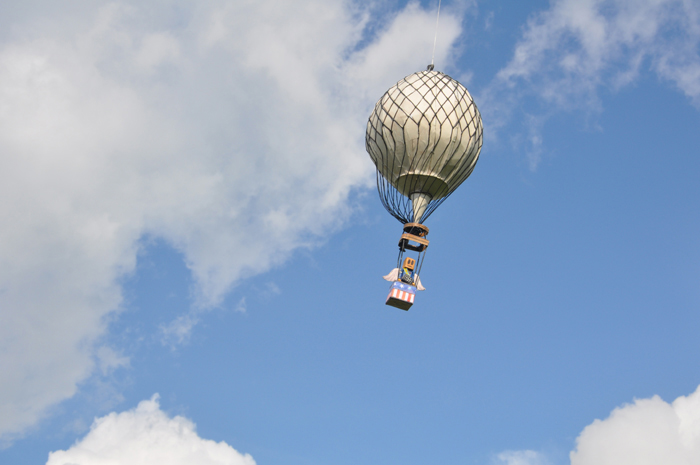
Early on the morning of April 20, 1861 Lowe set out on his journey.
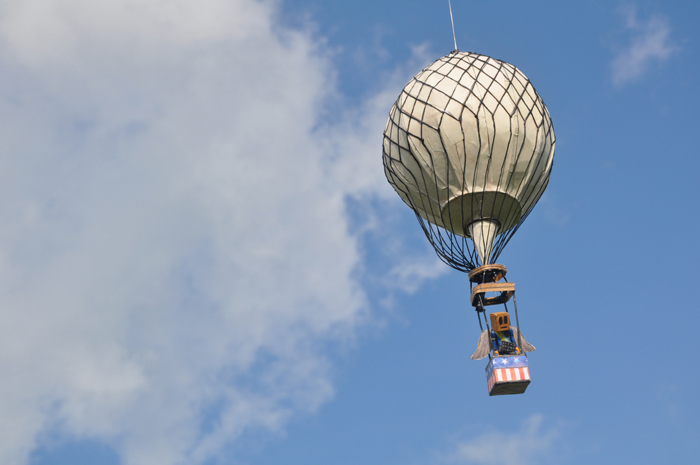
| What should have been a 500 mile jaunt to the Atlantic became a circuitous and confused trip some 800-900 miles long. |
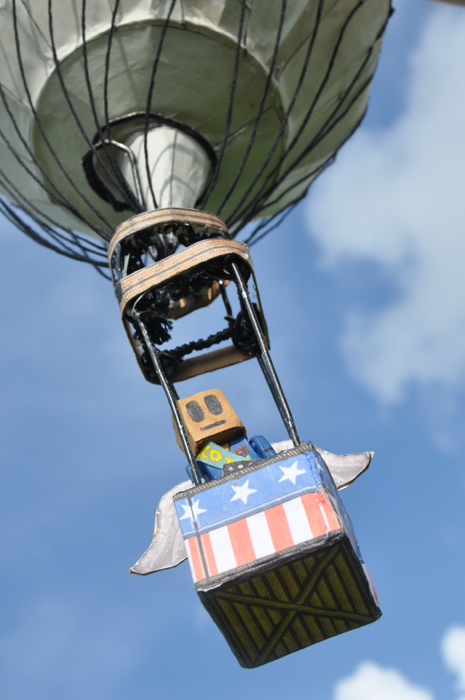
The trip would plunge the Yankee Lowe into the secessionist heart of the newly minted Confederate States of America, South Carolina. South Carolina, the very same state that had, eight days earlier, fired the first volley of the American Civil War at the Battle of Fort Sumter! |
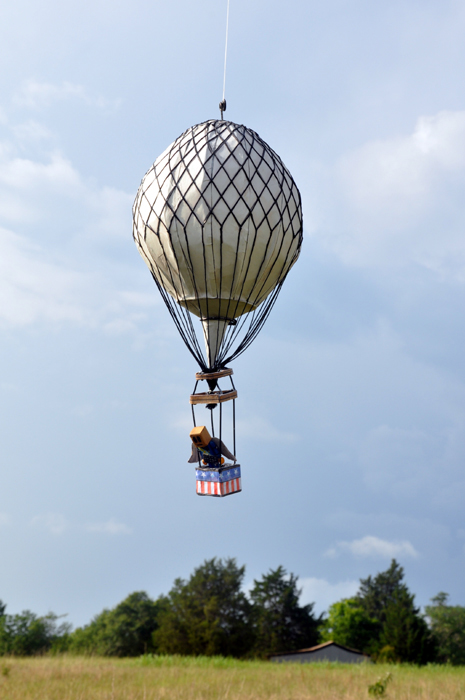
Lowe began his journey at around 4 A.M. in Cincinnati, Ohio on April 20, 1861.
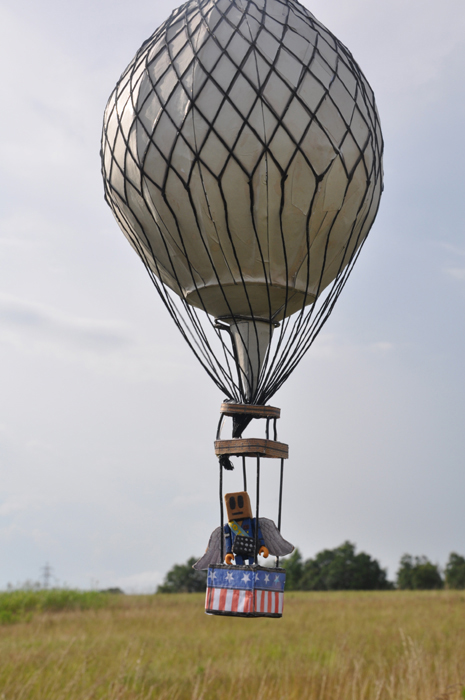
The balloon Lowe chose to fly that morning was the Enterprise which, according to legend, was named for the amount of time and money that went into creating it. |
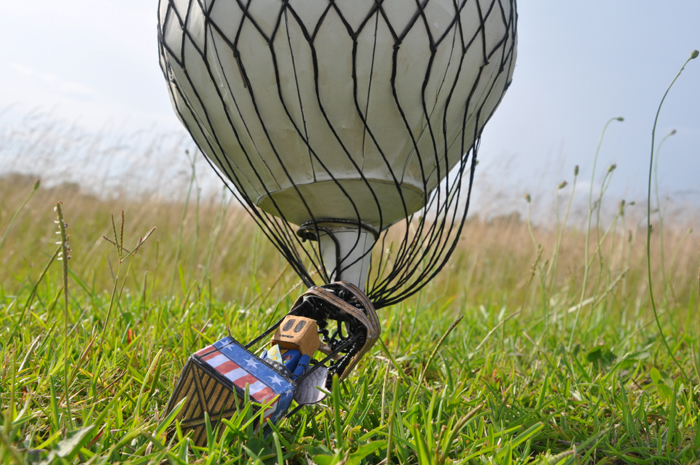
Lowe would later tell the Keowee Courier what he saw at 5:05 in the morning of April 20, 1861, "The sun showed a golden rim above the horrizon (sic) and soon sent a golden shower over the globe overhead." Below Lowe stretched first the Ohio River Valley, then the Cumberland Mountains, the Allegheny Mountains and, finally, the Blue Ridge Mountains. Lowe would rise to some 22,000 feet, more than 4 miles above the Earth's surface! |
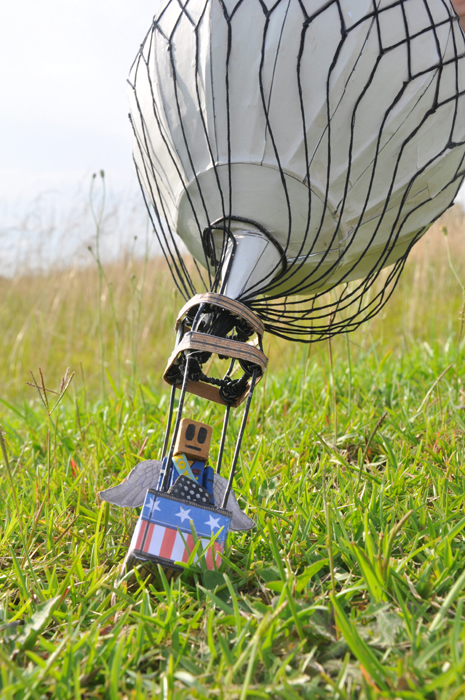
Sensing that he may be off course Lowe attempted to ascertain his exact location.
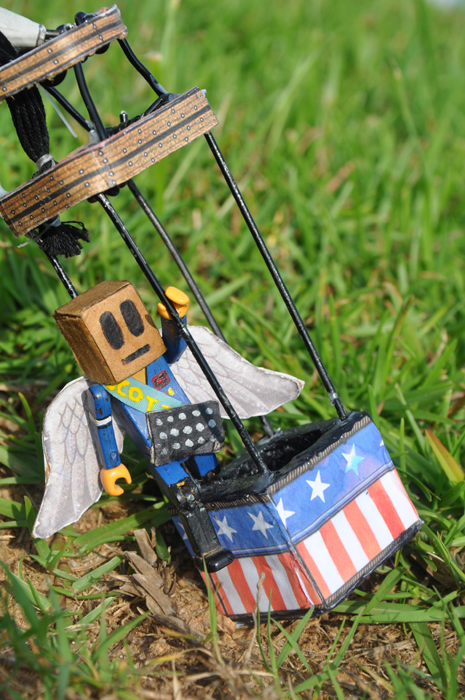
Lowe descended to the Earth and, according to the Keowee Courier, "caused great consternation among the inhabitants. They would not render me any assistance, but threatened destruction to the 'hellish contrivance' that had frightened them so; but I learned that I was in the township of Spartanburg, near the line of North and South Carolina." |
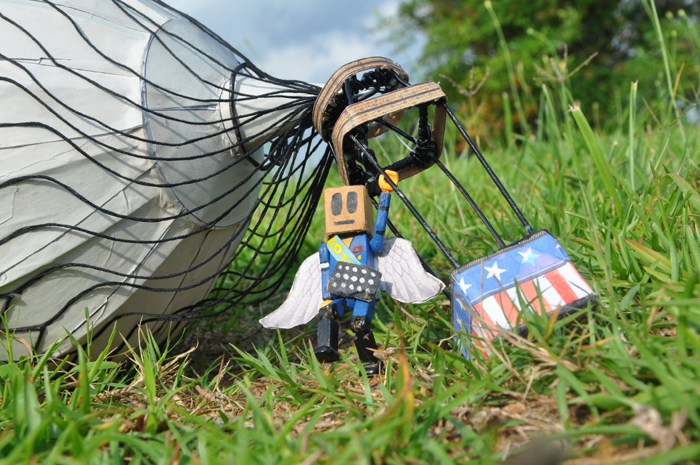
Determined to land, Lowe came to Earth in what is now Union, South Carolina. A tall white woman came to greet him. Lowe expressed his surprise that no white men came to greet him, to which the tall woman said that all the brave men had already left for the war. As a result the only white men left were either cowards or elderly, and the old people inside were praying as they thought the day of judgment had come. |
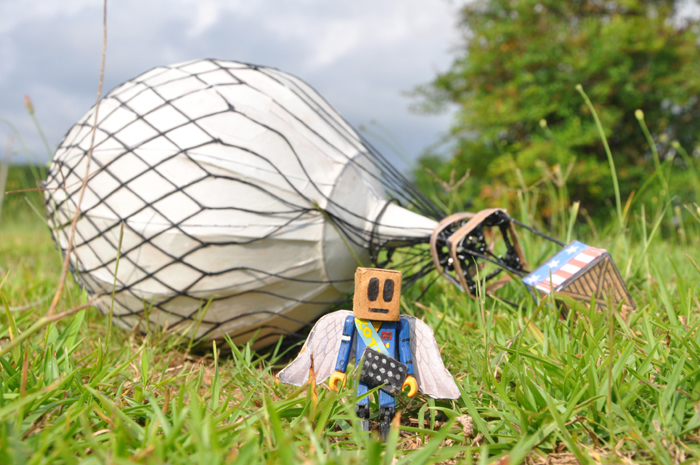
When white men finally did arrive, they arrived, according to the Keowee Courier, "with muskets, threatening destruction to the 'devil' that could travel through the air; one added that he followed it ten miles and had shot at it six times." |
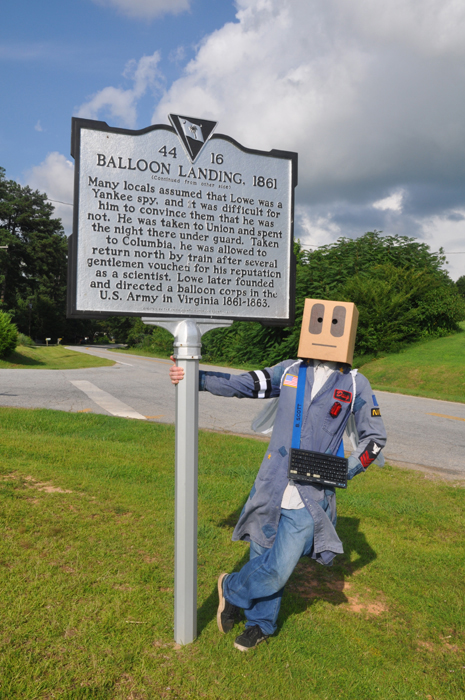
The locals still were unsure how to treat Lowe; some suspected Lowe of being a Yankee spy. Tarring and feathering could be a nasty reality if the crowd decided that Lowe was a spy. |
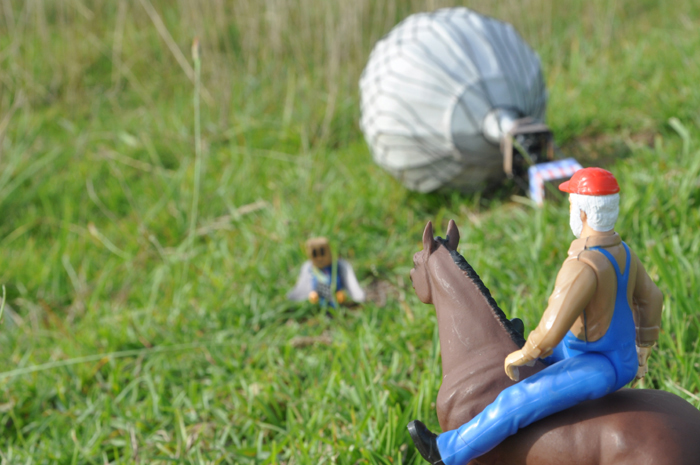
Luckily for Lowe a local hotel keeper and a newspaper editor would vouch for Lowe. Lowe was then taken to Columbia where professors of the University of South Carolina would also vouch for him. |
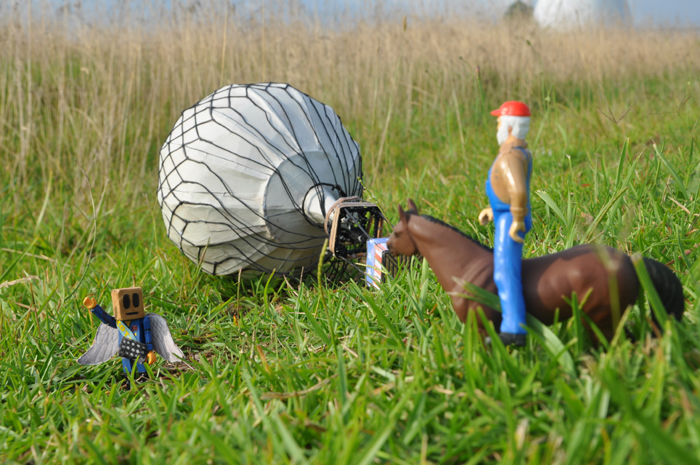
Ultimately Lowe was allowed to take the train back to the North and given papers to do so by the mayor of Columbia. |

Lowe was not done with his balloons, nor was he done with the Civil War.

Lowe thought that his balloon could be used for aerial recognizance in the war and hoped to demonstrate the capabilities of his balloon to the President of the United States, Abraham Lincoln. So, on Saturday June 16, 1861 Lowe ascended in the Enterprise to a height of some 500 feet. He did this across the street from what we now call the White House. From 500 feet Lowe telegraphed a message to the President of the United States. |
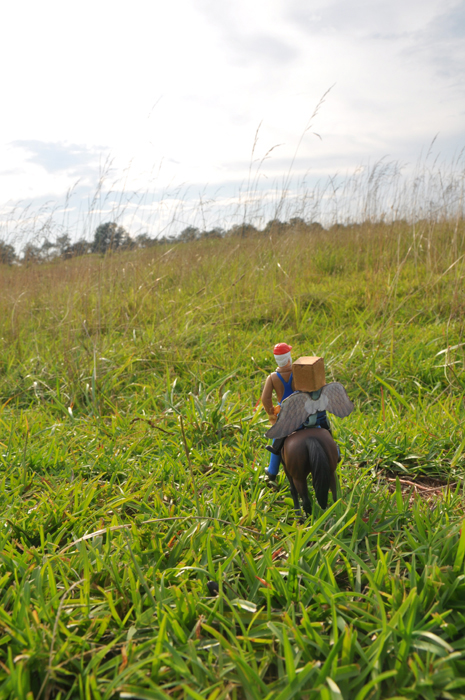
Lincoln must have been impressed as he promoted Lowe to the new position of Chief Aeronaut of the Union Army Balloon Corps. |
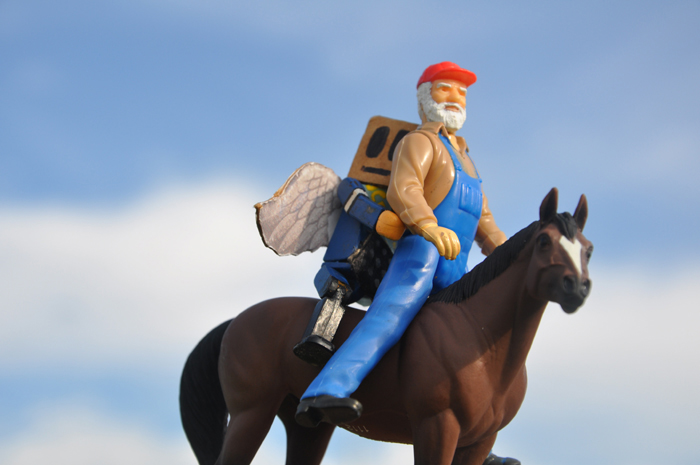
Seven other aeronauts were added to the corps, and seven new military grade aerostats, or balloons, were constructed and the Enterprise was retired. |
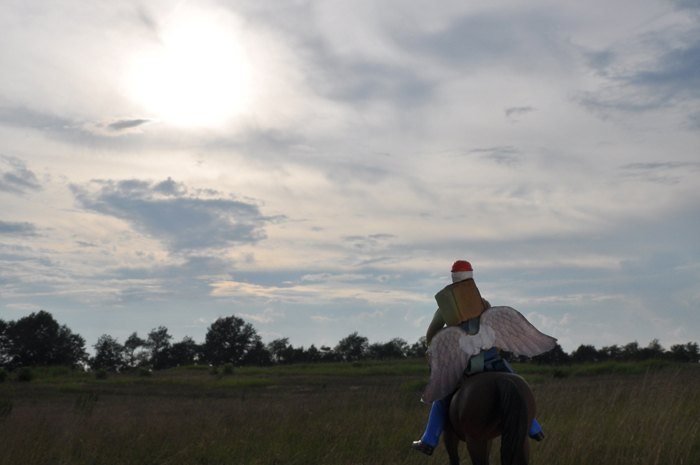
The Balloon Corps would see action at the battles of Bull Run, Yorktown, Fair Oaks, Vicksburg, Seven Pines, Antietam and Fredericksburg. In what was an historic encounter on June 27, 1862, two Union balloons, the Intrepid and the Washington, shared the battlefield with the Confederate balloon the Gazelle. The Union Army Balloon Corps operated until the August 1863 resignation of Lowe. Thaddeus Lowe would live until 1913 and today rests in peace in Pasadena, California. Thanks to Thaddeus Lowe, Fiddlersgreen.net and YOU! |
